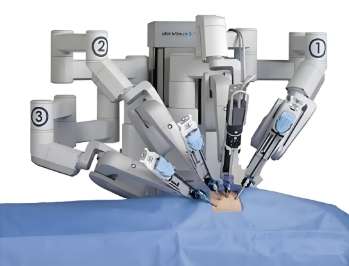
When the mechanical arms of surgical robots navigate precisely through human blood vessels,the lubrication microholes with a diameter of 0.3 millimeters at their joints are playing a crucial role.These holes,which are finer than a human hair,could pose a fatal embolism risk if a micrometer-sized metal burr remains and enters the bloodstream with the lubricating oil.In the field of medical devices,the control of burrs in titanium alloy microholes has long transcended the realm of ordinary CNC precision to become a lifeline safeguarding patient safety.
The Lethal Paradox of Microhole Burrs
The machining of titanium alloy microholes in surgical robot joints faces three major contradictions:
• Geometric Precision Trap:A concentricity of±5 micrometers is required for the 0.3-millimeter-diameter hole,but traditional drilling can produce"volcano-like burrs"as high as 20 micrometers.
• Biocompatibility Challenge:Electrolytic deburring leaves chemical residues that can damage the titanium surface oxide layer,reducing the adhesion of bone cells.
• Cleanliness Limit:The ASTM F2459 standard requires residual particles to be less than 0.1 millimeters,equivalent to removing all sand grains from a football field.This is in stark contrast to the processing of large metal parts,where wind power gearboxes allow for controllable burrs,while surgical instruments require a microscopic level of cleanliness for burr residues.
Five-Dimensional Burr Control System
Micro-Cutting Process Restructuring
1.For the microhole clusters in robot joint sockets:
• Utilize a high-frequency spindle rotating at 200,000 revolutions per minute,paired with diamond-coated micro drills.
• Develop a"peck-drilling and retraction"adaptive algorithm:retract 0.5 micrometers for every 5-micrometer feed to break the burr formation chain.
• Precisely control the cutting fluid pressure at 0.2 MPa to avoid hole wall deformation caused by fluid impact.
2.Precision Burr Removal with Energy Fields
• Breaking through physical contact limitations:
• Low-temperature plasma flow:A-196°C argon plasma beam selectively bombards the root of the burr,with the base temperature rising only by 8°C.
• Laser micro-ablation:Femtosecond laser pulses with a duration of 0.1 picoseconds remove burrs,with a heat-affected zone depth of less than 1 micrometer.
• Ultrasonic cavitation flow:40 kHz high-frequency cavitation bubbles generate microjets inside the microholes to remove residues from the blind hole bottom.
3.Cross-Scale Cleanliness Verification
• Establish a four-level detection loop:
• White light interferometry scans the 3D morphology of the hole entrance(resolution of 0.01 micrometers).
• Scanning electron microscopy analyzes sub-surface lattice damage.
• Collect residual particles with a filter membrane after ultrasonic cavitation in pure water.
• In vitro cytotoxicity tests verify biocompatibility.
Value Extension of Medical Precision Engineering
A wrist joint component of a surgical robot achieved the following through this process:
• Burr height in microholes reduced from 18 micrometers to 0.7 micrometers.
• Residual particle count reduced from 152 per square centimeter to 3.
• Joint fatigue life increased to 5 million cycles(a 5-fold increase).
Surprisingly,this technology is also benefiting the new energy field:
• Micro-nozzles of photovoltaic panel laser scribing machines use the same process to eliminate silicon crystal cutting contamination.
• Burr control yield of hydrogen fuel cell bipolar plate flow channels improved by 40%.
• Pass rate of wind power pitch bearing oil injection holes jumped from 76%to 99%.
Philosophical Insights into Microscopic Cleanliness
When machining large metal parts with CNC machines,a 0.1-millimeter error may seem negligible.However,in the microscopic world of surgical instruments,a 0.1-micrometer burr is like a boulder on the edge of a cliff.This difference in scale reflects the essence of medical precision engineering—waging a second-by-second battle for life in the invisible realm.
The titanium alloy components that have undergone turning and milling will ultimately extend the hands of surgeons under the operating light.When the 100,000 microholes in the robotic arm joints achieve microscopic cleanliness and each nanometer-level titanium surface becomes a cell-friendly home,that is the profound mission of medical device manufacturing—to safeguard the fragility and dignity of life with the ultimate precision of metal craftsmanship.